
It is August here in Antalya and the temperature is exceedingly hot (100 degrees) with high humidity (60%). To try and escape these hot temperatures we decided to drive north of Antalya, towards the mountains for cooler temperature, to a village called Ormana. On this journey, we brought along our family visiting us from the United States and our friends Cengiz, Titania, and their two teenage boys.

Wild Horses in Ibradi District
Located in Antalya’s Ibradi district the village of Ormana sits at the foothills of the Taurus Mountains. The ancient Greeks once called this village Erymna. Full of nature, history, and an escape from the big city, this village has become an attraction to many hikers, nature walkers, yogis, and movie stars. What attracts many tourists to Ormana is the famous Ottoman-era button houses that range from 100 – 300 years old. The current inhabitants are restoring Ormana’s historical landmarks and century-old button houses from donations received from native Ormanians who have made money in Istanbul’s real estate.
We had the pleasure of meeting Tolga Özgüven and his mother, Jane, when we arrived at Berberoğlu Mansion, which operates as a boutique hotel. Tolga and his mother are leading the way in a project called, Ormana Active, established to rejuvenate and restore the village’s historical sites.
ORMANA ACTIVE
Ormana Active was developed by a father and son team, Aydin Özgüven and his son Tolga Özgüven, who not only restored many historical button houses and other landmarks but developed tourism for the village of Ormana and provide employment opportunities for the locals. Although Aydin passed away last year, his legacy lives on through his son and the foundation he created in making Ormana what it is today.

Ormana Active
The need for this project is explained in the history of the village. Due to the lands having limited resources, many of the villagers migrated out of Ormana, searching for work. During the 1970s many of the villagers found work in Istanbul and purchased property, developing it into rental homes and businesses. As Istanbul grew and became a major city for Turkey, these villagers prospered in becoming landlords. Although they became successful and wealthy in Istanbul, they continued to return to their village and share their wealth by investing in the community.

Ormana Active Guestroom
As we arrived in the village, we could see the continuous efforts as the city streets were being restored and all the electrical lines were being placed underground. As we traveled down Main Street we could see the progress and success of the restoration projects done on many of the button houses.
TOUR OF BUTTON HOUSES, TEXTILE SCHOOL, AND BLACKSMITH
Tolga was excited to be our tour guide and share with us the history of Ormana and explain the features of the button houses and how they got their name. The mountains of Ibradi region are covered with cedar and pine trees, watered by mountain streams that form the Manavgat River. The people of this region lived off the land, grazing goats, gardening, or from the production of the fruit trees. There aren’t any commercial farming here.

Button House needing restoration.
The Taurus Mountains and the Ibradi region became an important passage for traders from the Mediterranean and because of its cool climate it quickly became popular Summer-Home destination for those who wanted to escape the coast’s scorching heat.

Taurus Mountains
Tolga guided us throughout the village to several of the button houses some of which are fully restored, and others are work in progress. There are about 300 homes around Ormana and the oldest is approximately 300 years old. What makes these homes so unique is that they are free from masonry mortar. The walls are about 2 meters in thickness, consisting of big stones on the outer edges of the wall with small stones filling up the middle. In this design, the structure has no humidity in these houses. What bounds the walls together is the lacing of cedar planks between layers of stone. This design has the same functionality as a button on a shirt, thus how they received their name “Button Houses.”
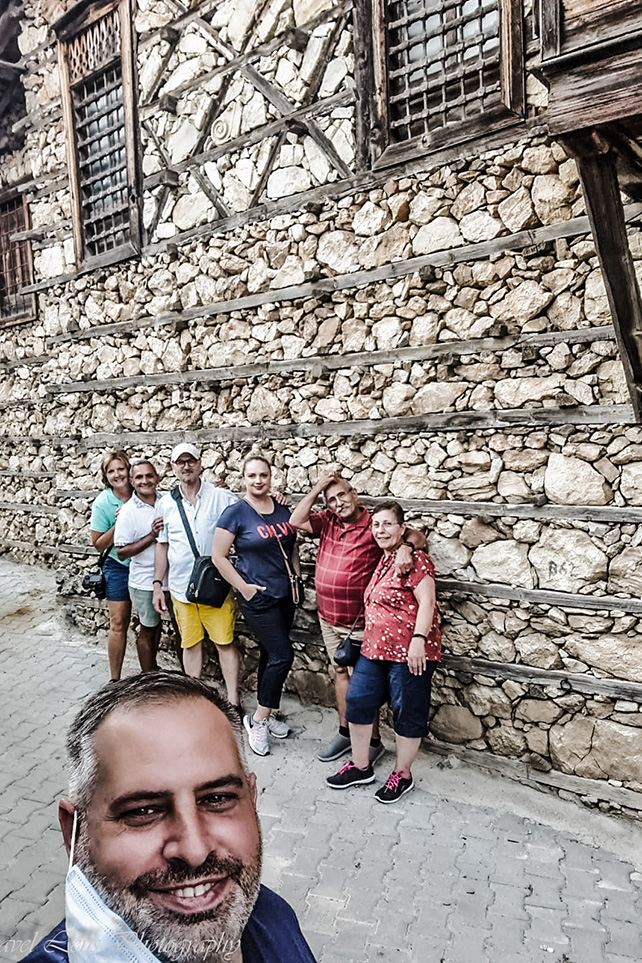
Tolga giving us a tour of ``Button Houses.``
All the homes are two-stories and functioned as a barn and living quarters for the residents. At the base of the home is a stable for the animals. The manure from the animals would create heat rising to the top, heating the homes. The second floor was the living quarter, each room serving as a complete home (bed, kitchen, living space). You may have several families living within one house.

Button House Stable Door
As Tolga shared his knowledge of the button houses, he occasionally pointed out interesting aspects such as Roman stones embedded into the walls, or woodcarvings of symbols on the doors. One interesting fact he shared is the sound of the doorknockers. At the entrance of the home are double doors with doorknocker on each door. Each doorknocker makes its own sound. Why? Men visitors would use the knocker on the right while women visitors would use the knocker on the left. Women were required to be covered if a male was knocking on the door… such as the mailman.

Button House Door Knocker
WEAVING AND TEXTILE
Tolga along with others of the Ormana Active are working to not only restore historical buildings but also providing training of trades such as weaving, which is slowly disappearing, by teaching the new generation as well as educating others that visit the village.

Weaving Center
Within one of Ormana’s schools is a weaving and textile school. Weaving is one of the oldest arts in the world. Gilamik is a woven silk fabric that is still made in Ormana village today. Due to the decrease in the production of silk, cotton, and linen threads are being used in these fabrics nowadays. Gilamik fabric is woven on wooden looms called “duzen or dezgah”. Gilamik fabrics are used as a headscarf, shawl, veil, table clothes, bedspread, or coffee table sets.

Omar tryiing to learn to weave.
Omar took on the challenge to try and coordinate his feet with threading the string and pulling the lever to make the fabric. His coordination skills were not so good! This experience made you appreciate the work of “weavers” and their excellent attention to detail.

Homemade items in Ormana
We were able to browse and purchase handmade items created by locals such as scarfs, dolls, table coverings, and other beautiful pieces.
BLACKSMITH
Blacksmithing is a traditional art based on heating iron and shaping it with simple hand tools. Tolga introduced us to a local blacksmith working in his shop. We were able to watch a blacksmith work on a knife. Tolga explained that in all of Turkey there are only 40 professional blacksmiths. Within Ormana, two professional blacksmiths are still in operation and have been an integral part in restoring the village. When horses were used as a means of working the land and traveling, blacksmiths stayed humming with business making horseshoes. Due to the decrease in the use of horses as well the increase of plastic, steel, and Teflon, the traditional needs of a blacksmith are disappearing. Today, most of blacksmiths focus on making small hand tools, knives, or work with copper potting.

Blacksmith in Ormana
BERBEROĞLU RESTAURANT
After touring the button houses, we had lunch at Berberoğlu Restaurant which is within the Ormana Active building, one of the main button houses. Inside the restaurant are tall wooden sculptures of various animals along with much other interesting artwork. As we walked into the main area of the restaurant we were greeted by a beautifully decorated bar and directly across it is a cozy fireplace where one can sit to enjoy a beverage: Turkish Coffee, Tea, Beer or Wine.

Berberoglu Restaurant
While at the restaurant, we never asked for a menu. We simply relied on Tolga to have the cook prepare traditional Turkish food to everyone’s liking and cravings. All the meat and produce served at the restaurant are grown locally. Everything is fresh! For our first dinner, we had fresh grilled fish with vegetables and homemade bread.
After a wonderful meal, we celebrated great friendship with a bottle of champagne and entertainment with traditional Turkish music and Turkish-Spoon dancing. Kaşık Oyunu (Spoon Dance) is the most popular dance in central Anatolia. Dancers carry in each hand, a pair of varnished wooden spoons, one of which is inserted between thumb and forefinger and the other between the middle and ring finger- in this position they are clicked like castanets. The dancer treads with small steps in a confined space while undulating the lower part of the body. Omar and I tried spoon dancing but were not successful. I must say it is harder than it looks to make the spoons click together.
``Spoon Dancing``
The breakfast served here is something to experience. I have never seen so many different dishes on the table! If you want to experience a true Turkish breakfast you must have one at Berberoğlu Restaurant.

Turkish Breakfast
ÜZÜMDERE NATIONAL PARK & CEVIZLI VILLAGE
New to this mountain area, we decided we wanted to explore the region, so we took off on a road trip to Üzümdere National Park and Cevizli Village. Üzümdere National Park is not well known but it offers dozens of geographical beauties, a place where nature lovers, camping enthusiasts, and those who want to relax will find paradise. Home to many enormous streams of clear cold water, with lots of trees shading the water’s edge, and rock formations creating curves throughout the mountains. Üzümdere National Park is a photographer’s paradise!

Uzumdere National Park

Cevizli Village
We stopped at Uzumdere Melas Restaurant nestled at the edge of the river’s stream and enjoyed dipping our toes in the ice-cold water as we listened to the water sounds cascading over the rocks. I love nature and enjoy just breathing in the fresh air and admiring mother nature. We all enjoyed freshwater grilled trout, cucumber, tomato salad, along with fresh bread. After a good lunch and few cups of tea, it was time to resume our excursion, and off we went to our next stop, to the city of Cevizli.

With a government grant from the province of Antalya, Cevizli Village, the ancient city of Kargas, is being restored and developed to attract those wanting to get out of the city. This small village is located at the foothills of the mountains. This village was named after the “scared and beautiful hills.” The word “Cevizli” means walnut which you will find many walnut trees producing these tasty nuts in this region of Turkey. We stopped at the top of the hill to get a birds-eye view of the city, enjoying the cool breeze and explore the restoration of button houses being restored.
Traveling into the Taurus Mountains and enjoying the smell of cedar trees was a great way to get out of the city for a couple of days. Tolga and his mother have done a great job in not only bringing prosperity to Ormana but also by educating visitors about the history of the village. If you want to take a break from your busy life, enjoy nature and the quietness, travel to Ibradi district of Antalya.
TIPS:
- If you plan to travel in the summer be prepared for hot temperatures in the mountains. The button houses do not have air conditioning and can be a bit warm in the summer.
- Eating out is limited although the few restaurants in Ormana are excellent.
- Internet and Phone connections can be limited and intermittent as you travel in the mountains.
- Travel routes can be tricky from village to village. We found that our GPS took us on a route that was not suitable for car/road travelers.
- Check ahead on the sites you want to visit. We discovered after we arrived that the Altınbeşik Cave was closed due to falling trees.
Enjoy your travels! Please read my blogs about other exciting places around the world at Traveling Lens Photography.
If you want to read more about Antalya, follow me on Facebook, Instagram, or Pinterest as I share my journey.
Inshallah (God willing!)










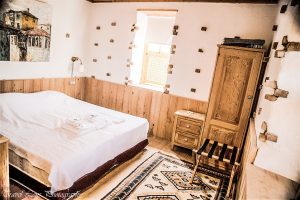
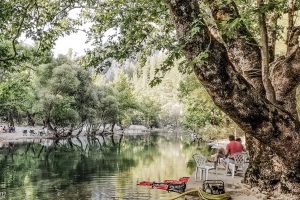

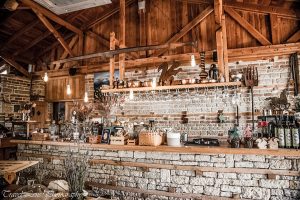


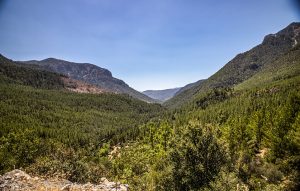










Petet
Thanks , your photos & stories are fun !
Lanell Rachid
Thank you! Hope you and your family are doing well.
Shabbir Mansoor Ali
What a beautiful article about such a awesome place, just raring to go there!